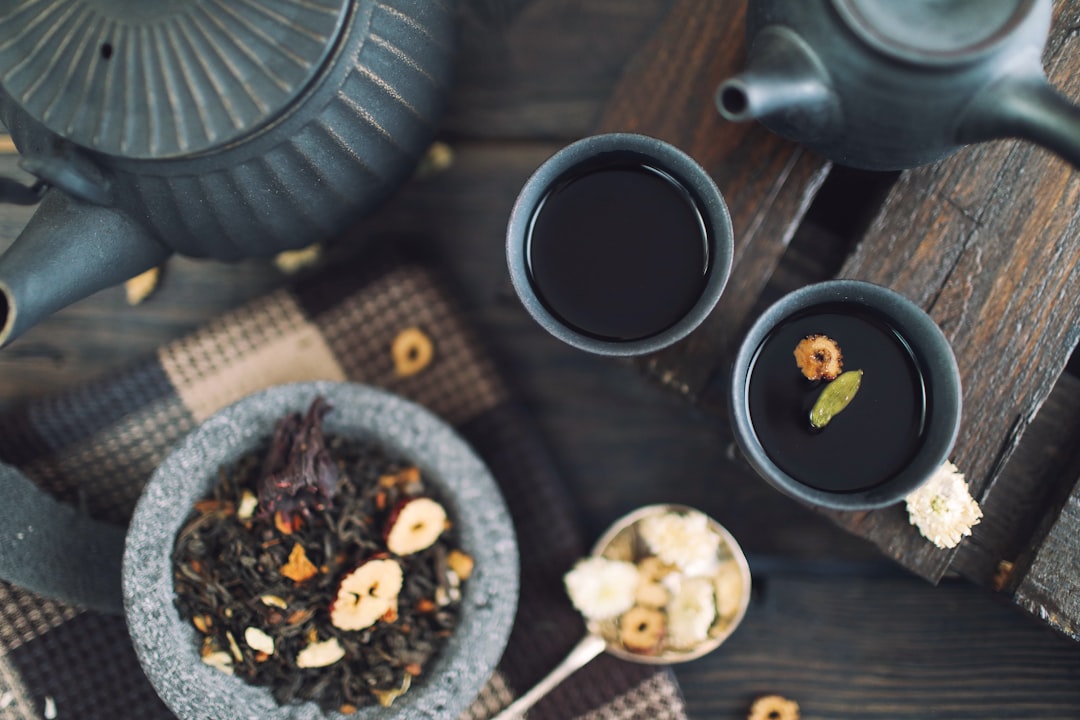Support our educational content for free when you purchase through links on our site. Learn more
[2023] The Ultimate Guide to Growing Tea from Seed: Tips, Tricks, and Expert Advice
Table of Contents
- Quick Answer
- Quick Tips and Facts
- Choosing the Right Seeds
- Preparing the Soil
- Sowing and Germinating
- Caring for Your Tea Plants
- Harvesting and Processing
- Common Challenges and Solutions
- FAQ
- Conclusion
- Recommended Links
- Reference Links
Quick Answer
Growing tea from seed is an exciting and rewarding journey that allows you to cultivate your own tea plants and enjoy the freshest brews. While it requires patience and dedication, the process can be simplified by following a few key steps:
- Choose high-quality tea seeds from reputable sources.
- Prepare well-draining soil with the right pH level.
- Sow the seeds and provide optimal conditions for germination.
- Care for your tea plants by watering, fertilizing, and pruning.
- Harvest the leaves and process them to create your own tea.
Growing tea from seed is a labor of love that can yield delicious results. Let’s dive into the details and get you started on your tea-growing adventure!
Quick Tips and Facts
Before we delve into the nitty-gritty of growing tea from seed, here are some quick tips and interesting facts to get you inspired:
- Tea plants (Camellia sinensis) can be grown from seeds, cuttings, or young plants, but growing from seed allows you to experience the full life cycle of the plant.
- Tea plants can take several years to reach maturity and produce leaves suitable for harvesting, so patience is key.
- There are different varieties of tea, including green, black, oolong, and white tea, each with its own unique flavor profile and processing methods.
- Tea plants thrive in regions with a cool climate, high humidity, and well-draining soil.
- The quality of your tea will depend on factors such as the growing conditions, harvesting techniques, and processing methods.
Now that you have a taste of what’s to come, let’s explore each step in detail.
Choosing the Right Seeds
The first step in growing tea from seed is to choose the right seeds. Here are some factors to consider:
- Variety: Decide which type of tea you want to grow, such as green, black, oolong, or white tea. Each variety has its own unique characteristics and flavor profiles. Choose seeds that correspond to your desired tea type.
- Source: Purchase seeds from reputable suppliers or nurseries to ensure their quality and viability. Look for suppliers who specialize in tea plants or heirloom varieties.
- Freshness: Opt for fresh seeds that have been harvested within the past year. Fresh seeds have a higher germination rate compared to older ones.
- Organic and Non-GMO: If you prefer organic or non-GMO seeds, make sure to source them from certified suppliers.
Pro Tip: Check out the wide selection of tea seeds available on Amazon, Walmart, and Etsy. Remember to choose the variety that suits your taste!
Preparing the Soil
Tea plants thrive in well-draining soil with a slightly acidic pH level. Follow these steps to prepare the perfect growing environment for your tea plants:
- Soil Type: Tea plants prefer loamy or sandy soil that is rich in organic matter. Avoid heavy clay soils that retain too much water.
- pH Level: Test the pH level of your soil using a soil testing kit. Tea plants prefer a slightly acidic pH level between 5.5 and 6.5. If your soil is too alkaline, you can lower the pH by adding organic matter or sulfur.
- Amendments: Incorporate organic matter, such as compost or well-rotted manure, into the soil to improve its fertility and drainage.
- Drainage: Ensure good drainage by adding perlite or coarse sand to the soil. This prevents waterlogging, which can lead to root rot.
Pro Tip: For a quick and convenient way to check your soil’s pH level, consider using a digital pH meter like this one from Amazon.
Sowing and Germinating
Now that you have your tea seeds and prepared the soil, it’s time to sow and germinate them. Follow these steps for successful germination:
- Timing: Sow your tea seeds in early spring or late fall when the soil temperature is around 65°F (18°C). This mimics the natural conditions tea plants prefer.
- Seed Treatment: Soak the tea seeds in room temperature water for 24 hours before sowing. This helps to soften the seed coat and improve germination rates.
- Sowing: Create small furrows or individual holes in the soil, spaced about 2 inches (5 cm) apart. Place the seeds in the furrows or holes, cover them lightly with soil, and gently press down.
- Moisture and Temperature: Keep the soil consistently moist but not waterlogged. Maintain a temperature of around 70°F (21°C) for optimal germination.
- Germination Time: Tea seeds can take anywhere from 2 to 8 weeks to germinate. Be patient and provide the necessary care during this period.
Pro Tip: To ensure a higher germination rate, consider using a seedling heat mat like this one from Amazon to maintain a consistent temperature for your tea seeds.
Caring for Your Tea Plants
Once your tea seeds have germinated and sprouted, it’s time to provide them with the care they need to thrive. Here are some essential aspects to consider:
- Watering: Tea plants require regular watering, especially during dry spells. Aim to keep the soil consistently moist but not waterlogged. Water deeply to encourage deep root growth.
- Fertilizing: Apply a balanced organic fertilizer, such as compost or well-rotted manure, in early spring and mid-summer. This provides the necessary nutrients for healthy growth.
- Pruning: Prune your tea plants regularly to promote bushier growth and improve air circulation. Remove any dead or diseased branches and shape the plant as desired.
- Pest and Disease Control: Keep an eye out for common pests such as aphids, mites, and tea leafhoppers. Use organic pest control methods or consult with local experts for effective solutions.
- Winter Protection: Tea plants are hardy but may need protection during harsh winters. Mulch around the base of the plants to insulate the roots and protect them from freezing temperatures.
Pro Tip: For a convenient and effective way to monitor soil moisture levels, consider using a soil moisture meter like this one from Amazon.
Harvesting and Processing
After years of care and patience, your tea plants will finally be ready for harvest. Here’s how to harvest and process your tea leaves:
- Timing: Wait until your tea plants are at least three years old before harvesting. This allows the plants to mature and develop flavorful leaves.
- Plucking: Use your fingers or small pruning shears to pluck the young, tender leaves from the top of the plant. Aim to harvest the top two leaves and the bud.
- Processing: There are different methods for processing tea leaves, depending on the type of tea you want to make. Common methods include withering, rolling, oxidizing (for black tea), and drying. Research the specific processing method for your desired tea type.
- Experiment and Enjoy: Don’t be afraid to experiment with different processing techniques and flavors. The fun is in discovering your own unique tea blends!
Pro Tip: For a comprehensive guide on tea processing methods and techniques, check out the book “The Tea Book” by Linda Gaylard. You can find it on Amazon for further reading.
Common Challenges and Solutions
Growing tea from seed can come with its fair share of challenges. Here are some common issues and their solutions:
- Slow Germination: If your tea seeds are taking longer than expected to germinate, ensure they are receiving adequate moisture and warmth. Consider using a seedling heat mat to provide consistent temperature.
- Pests and Diseases: Common pests include aphids, mites, and tea leafhoppers. Use organic pest control methods or consult with local experts for effective solutions.
- Soil pH Imbalance: If your soil pH is too alkaline, add organic matter or sulfur to lower the pH. Conversely, if the pH is too acidic, add lime to raise it.
- Overwatering or Underwatering: Tea plants require consistent moisture, but overwatering can lead to root rot, while underwatering can cause stress. Adjust your watering routine accordingly.
- Extreme Weather Conditions: Tea plants prefer cool climates, so extreme heat or cold can impact their growth. Provide shade during hot summers and protect them from freezing temperatures in winter.
Pro Tip: Join online gardening forums or local tea-growing communities to connect with experienced growers and learn from their insights and experiences.
FAQ

How many years does it take to grow tea?
Tea plants typically take around three years to reach maturity and produce leaves suitable for harvesting. However, it can take longer for the plants to reach their full potential and yield abundant harvests.
Read more about “[2023] How Hard is Tea to Grow? A Comprehensive Guide”
Can you grow tea plants from seed?
Yes, tea plants can be grown from seeds. While it requires patience and dedication, growing tea from seed allows you to experience the full life cycle of the plant and enjoy the satisfaction of cultivating your own tea.
Read more about “[2023] Herbs to Grow for Tea: A Comprehensive Guide”
How hard is it to grow your own tea?
Growing your own tea requires some knowledge and effort, but it is not overly difficult. With the right conditions, care, and patience, you can successfully grow tea plants from seed and enjoy the fruits of your labor.
Read more about “[2023] American Grown Tea Brands: Discover the Finest Teas from the USA”
Can I grow tea plants indoors?
Tea plants can be grown indoors, but they require specific conditions to thrive. They need bright, indirect light, consistent temperature, and high humidity. Consider using grow lights and a humidifier to create suitable indoor growing conditions.
Read more about “[2023] Is it Difficult to Grow Tea? A Comprehensive Guide”
Can I grow tea plants in containers?
Yes, tea plants can be grown in containers, making them suitable for small gardens or balcony spaces. Choose a large container with good drainage and use well-draining potting soil. Ensure the plants receive adequate sunlight and regular watering.
Pro Tip: For a wide selection of gardening containers and supplies, check out Amazon’s gardening section.
Read more about “[2023] Is it Difficult to Grow Tea? A Comprehensive Guide”
Conclusion
Growing tea from seed is a rewarding journey that allows you to connect with nature and enjoy the fruits of your labor. While it requires patience and dedication, the process can be simplified by following the steps outlined in this guide. Remember to choose high-quality seeds, prepare well-draining soil, provide optimal growing conditions, and care for your tea plants with love. With time, you’ll be harvesting and enjoying your very own homegrown tea.
So, what are you waiting for? Start your tea-growing adventure today and savor the joy of growing and brewing your own cup of tea!
Recommended Links
- Shop tea seeds on: Amazon | Walmart | Etsy
- Shop gardening containers and supplies on: Amazon
- Book recommendation: “The Tea Book” by Linda Gaylard. Available on Amazon
Visit Growing Teas™ for more tea-growing tips and information.


